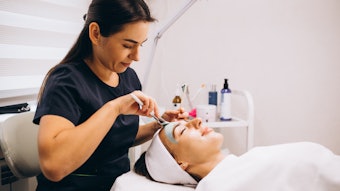
Medical spas are a $15 billion industry and are growing at an exponential rate. The industry is expected to reach $25.9 billion by 2026, with the average established medical spa generating $2 million annually.
So, it makes perfect sense why so many practitioners are wanting to expand into the medical spa arena or transition from the hospital setting or their current practice (dentists, family physicians, OBGYNs, etc.) to launch a medical spa— not to mention investment bankers and Private Equity Groups.
There are several factors driving the consumer market:
- Recession proof market
- Recurring revenue stream
- The demand for minimally invasive cosmetic procedures
- Advances in technology, making these procedures safer and more effective
- A population increasingly focused on wellness
- Our aging population looking for anti-aging and rejuvenation treatments
- The younger generation starting cosmetic procedures and treatments in their 20s or even earlier
- The male market growing at rapid rates
- The increased acceptance of non-invasive treatments as part of regular beauty maintenance
It’s easy to get lured in and want to hop on the medspa bandwagon, but launching without a strategic plan in place is like building a house without a solid foundation. Doing things correctly from the start and investing in experts to help with the practical and tactical aspects will save you time and money as well as prevent you from making costly mistakes.
Questions to Ask Yourself if You are Thinking About Opening a MedSpa
If you’re like most people considering starting a medical spa, you have a vision in your mind of what your business will look like. Vision and passion are necessary, but strategically planning to make that vision a reality is another story. You should be asking yourself:
- How can I do this?
- Is my concept and vision feasible?
- Who's going to develop my Pro Forma?
- What is the competitive landscape in my market?
- Do I need a business plan? How am I going to write a business plan?
- How much capital am I going to need?
- How am I going to get a bank loan?
- What are the startup costs required?
- What is the best location for my medical spa?
- How much space do I need?
- How do I negotiate a lease?
- How do I find the right architects/contractors/designers?
- What services am I going to offer and what is the right mix?
- How am I going to price them?
- Are they going to be profitable?
- How do I go about finding the right team?
- How do I compensate my staff?
- How will I train them?
The Three Key Phases to Open a Medical Spa
Phase 1
The first phase of opening a medspa includes creating your practice’s mission and vision statements. Next comes conducting a feasibility study and competitive analysis to determine your target demographics, ideal client and your unique value proposition.
A feasibility study helps to define how many people in your target demographic (say women between 25 and 65 with household incomes of over $100K) exist in your market. Then you want to perform a competitive analysis to determine how many competitors are vying for that same market. Determine how many competitors are there, what is their target demographic and what you can realistically expect your share of the “pie” to be.
Next comes researching to determine your startup costs and how much capital you are going to need to open your doors. Most entrepreneurs grossly underestimate their startup costs if they try to do it themselves due to so many factors that are typically unaccounted for.
Once you have calculated your startup costs, you must complete a Pro Forma. A Pro Forma is all the financial statements: assets and liabilities in the balance sheet, profit & loss statement, revenue cycles, expenditure cycles and tracks the money in and out for your cash flow. The Pro Forma also considers marketing costs, labor costs and general and admin costs. After creating the Pro Forma, you can determine your EBITDA (earnings before interest, taxes, depreciation, and amortization). This is important for securing a loan and this is what private equity looks for when considering a purchase.
It is also vital in phase one to determine the right mix of services you plan to offer and build out your revenue per hour and profit per treatment based on assumptions in your Pro Forma. You want to ensure what you are offering yields the most profit. This may not look like what you had in your initial vision.
Then you must create a budget and forecast for the first year. A forecast is revenue minus expenses, but it does not take debt into account. For example, if you have a loan payment of $5,000 per month, that is not going to show up on your Profit & Loss statement.
Finally, you need to develop a comprehensive business plan. This is very important if you are trying to secure a loan. We strongly encourage you not to buy a generic template online but to work with experts in the aesthetic space to develop your business plan.
Phase 2
Phase two involves procuring your loan, selecting your site and designing/building out your space. You’ll need to hire a commercial broker and negotiate a lease or purchase. You’ll need to hire architects, come up with a building timeline and hire a general contractor for construction oversight as well as designers, decorators, etc.
Doing all this on your own, again, can be super overwhelming without expert guidance with years of experience starting up 100's of successful medical spas. Practice management consultants make sure all this is covered and can help you save money from very costly mistakes.
Phase 3
The third phase is all about implementation, which means everything you must do until you open your doors. The implementation phase starts about 90 days before you open and there should be milestones starting at 90-, 60- and 30-days pre-opening.
There are a multitude of tasks to do during this phase including:
- Securing legal, accounting and insurance services
- Creating an SEO-optimized website for lead generation, social media channels and a marketing plan
- Pre-launch planning and execution
- Selecting your software for accounting, patient communication, practice management and EMR (electronic medical records)
- Purchasing or leasing equipment to support your treatments/procedures you plan to offer and supplies you need as well as determining any retail lines you plan to sell
- Human resources tasks such as recruiting, hiring, onboarding and training your new team
- Setting up operational and clinical systems
- Inviting vendors to conduct training
- Finally, you want to plan your launch event
This is just a broad overview, but as you can see, there is so much involved that this is not a case where you can rely on the old saying, “build it and they will come.”












